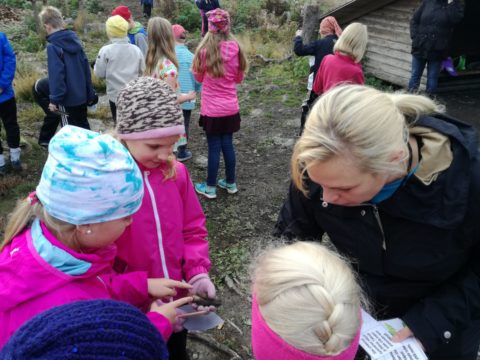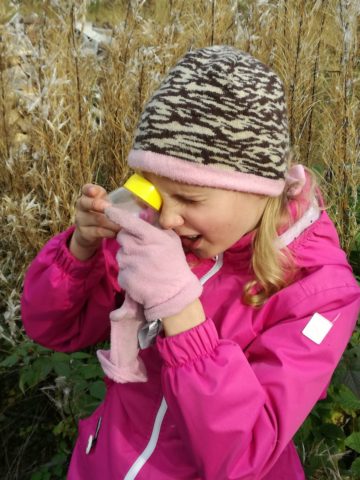The Finnish forestpedagogy – The forest promotes learning and overall well-being
Nature, particularly the forest, is an important part of the early childhood education environment. When in nature, children get the chance to learn daily skills and general knowledge. It is also a good place for learning about the environment: children can be taught responsibility for their actions with the environment as well as basic sustainable life habits.
In addition, children can learn mathematical thinking. For example, they can learn to observe numbers: how many trees or rocks are in a certain area, how many petals are on different forest wildflowers or how many seeds are in a Mountain Ash berry. Children can also use their hands at measurement: can their arms go around a tree or how many steps are needed to get from one tree to another.
 In addition to play and physical activity, wonder and investigation are natural for children, and there are many things to observe in nature: soil, plants, trees, rocks, light and shadow, and sounds. Furthermore, children can strengthen their geometric thinking in nature as well by observing items and shapes or practice location concepts. The concept of time can be learned through observing daily and seasonal changes: how does the neighbouring forest change from one season to the next or is it different in the morning versus the afternoon. If adults cannot think of anything to study outside, children certainly can. Trips in the local surroundings can inspire children, sometimes accidentally, to come up with wonderful phenomenological projects stemming from their ideas and wishes.
In addition to play and physical activity, wonder and investigation are natural for children, and there are many things to observe in nature: soil, plants, trees, rocks, light and shadow, and sounds. Furthermore, children can strengthen their geometric thinking in nature as well by observing items and shapes or practice location concepts. The concept of time can be learned through observing daily and seasonal changes: how does the neighbouring forest change from one season to the next or is it different in the morning versus the afternoon. If adults cannot think of anything to study outside, children certainly can. Trips in the local surroundings can inspire children, sometimes accidentally, to come up with wonderful phenomenological projects stemming from their ideas and wishes.
The forest is a multifaceted play environment where there are many toys (rocks, sticks, pinecones and other natural materials) and imagination stimulating elements, shapes and colours. What is lovely about the forest’s multifacedness is also that the plays are often collective and gender neutral. In the forest, children can find common interests and their collective positive experiences reinforce the feelings of belonging to the group.
The forest promotes overall well-being in both adults and children. The mind becomes peaceful and relaxes in the forest, and heart rate, blood pressure and stress are reduced. Moving and playing in such a varied landscape are among the best outdoor and physical activities for children. Studies indicate that positive effects occur already within 15 minutes of being in the forest (Tyrväinen, Liisa, Sievänen, Tuija, Tuulentie, Seija & Kurttila, Mikko (toim.) 2014. Hyvinvointia metsästä. Helsinki: SKS).
In Finland, many early childhood education units have a forest that is nearby and accessible, but that is not the case for everyone. Any (neighbouring) environment, such as a yard, a park, a beach or a green space can be used instead. What is important is to realize that learning does not have to just occur within the four walls of the classroom.



